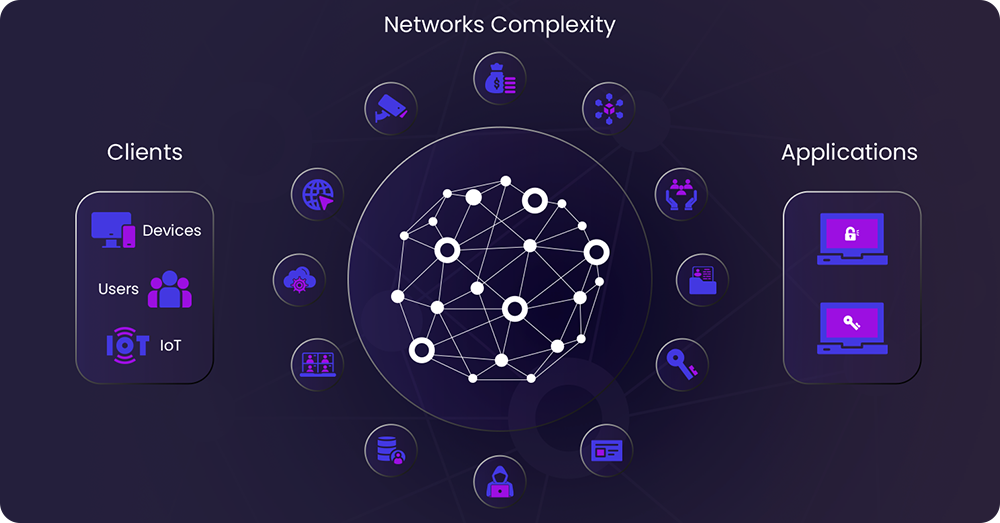AI in Network Monitoring: Transforming Business Success
Discover how AI in network monitoring enhances network performance, predictive analysis, and root cause analysis.


Discover how AI in network monitoring enhances network performance, predictive analysis, and root cause analysis.

In the modern technology-driven business landscape, networking is a critical component for office-based companies of all sizes and shapes. However, ensuring that your network operates at its full potential can be a challenging task. Without an effective monitoring solution in place, your team’s productivity and your company’s revenue could be at the mercy of technological glitches. That’s where managed network monitoring solutions become essential for many businesses. But here the question arises: Is your business prioritizing the same level of network performance?
As data volume and network bandwidth requirements continue to grow, the need for advancements in the state of the network is continuously evolving. Meanwhile, customers have high expectations for applications, including fast loading times and seamless network performance. However, companies often encounter challenges in effectively managing network traffic. This raises the question: What are the reasons behind these difficulties faced by companies in network traffic management?

Since, in this always-on and complex environment, networks are becoming overloaded. Now organizations need to make sure of optimal performance for their end-users while maintaining service quality. But the traffic volumes are constantly growing, which results in bursting network performance during peak hours. So, how can these complex networks & their operations be managed flawlessly?
This is where artificial intelligence (AI) network management applications come into play as powerful tools for network management and operations. Although relatively new, these platforms are already being implemented by forward-thinking IT teams who recognize their potential. AI in Network monitoring works as the panacea to improve business performance globally around the world. But how exactly does AI in network monitoring improve network quality and sustain optimal service levels?
Undoubtedly, AI is transforming various industries worldwide, and of course, Telecom and ICT are no exception. So, what benefits does this AI technology provide for enterprise networks? Further, what new possibilities can enterprises expect to maximize efficiency and generate new revenue streams?
AI network monitoring poses various potential benefits that help in creating a more finely tuned, high-performing, and reliable enterprise environment. In the realm of IT systems, AI analyses huge amounts of data & provides valuable insights based on its findings. The essence of AI, and the primary reason why it is gaining so much attention, is that it enables intelligent automation of various tasks that saves vast amounts of time and enhances operational efficiency.

Still uncertain? Let’s explore the detailed benefits involved in the smooth functioning of network infrastructure.
AI enables us to achieve unprecedented levels of threat detection speed. By analyzing millions of events per second, we can swiftly identify anomalies and respond promptly with appropriate actions.
Using AI, we can analyze vast quantities of data within mere seconds, surpassing the traditional minutes-long timeframe. This accelerated analysis empowers us to identify patterns and make accurate predictions about future behavior.
Furthermore, AI plays a crucial role in enabling predictive maintenance through its intelligent anomaly detection capabilities. This means that potential issues or anomalies can be detected in real-time, allowing proactive measures to be taken to address them before they escalate.
The Research conducted by Opengear reveals that 91% of global businesses encounter at least one outage, which highlights the need for improved network resilience
Network outages are common in any network environment. However, what sets enterprises apart is the speed at which their networks recover and return to normal functionality. This is where Mean Time to Repair (MTTR) comes into play as a crucial metric, measuring the actual time taken for the network to identify, analyze, and resolve the issue.
Maintaining low MTTR values is a critical factor in minimizing SLA breaches and associated penalties. However, effectively monitoring and managing MTTR values is often easier said than done.
Since networks are complex systems with thousands of manpower involved in their management, it is obvious that minor human errors such as improper device configuration can lead to a screeching halt of your enterprise network. Thus, when downtime occurs and performance issues arise, the most crucial task is to identify the root cause of the problem as soon as possible and try to resolve it. However, this is where the challenge arises. Root cause analysis often consumes more time than the actual resolution process itself.
This is where exactly Echelon Edge’s Percipient NMS comes into the picture. Its root cause analysis feature provides a holistic view of your network data including all your devices, interfaces, and URLs, all consolidated into a single, intuitive interface. Its centralized visibility allows you to analyze, compare, and correlate issues, and narrow down the root cause quickly. This streamlined process enables your business to swiftly address network challenges and ensure uninterrupted operations.
With AI, there comes a lot of hype that leads to false expectations. But AI in network monitoring has already provided substantive value to various companies. It enables IT systems to self-correction capabilities for maximum uptime while providing prescriptive actions to solve problems. Moreover, AI-driven networks capture & save data prior to network outages. That further helps in speed troubleshooting.
To conclude, AI enables IT teams to discover and isolate problems quickly by correlating anomalies with historical and real-time data. By doing so, IT teams can scale further and shift their focus toward more strategic and high-value tasks. This shift in focus enables scalability and frees up valuable resources that were previously dedicated to identifying and resolving complex network issues.
However, one might wonder if AI-based networking alone is sufficient for the demands of today’s complex networks. What if there exists a comprehensive and unified solution tailored specifically for your enterprise network? Curious to learn more?
This is where Percipient NMS stands out. The AI-powered network monitoring solution has been built for the systems to forecast anomalies and predict faults with easy deployment.
However, one might wonder if AI-based networking alone is sufficient for the demands of today’s complex networks. What if there exists a comprehensive and unified solution for your enterprise network? Curious to learn more?
Reach out to our experts and keep reading our blog…